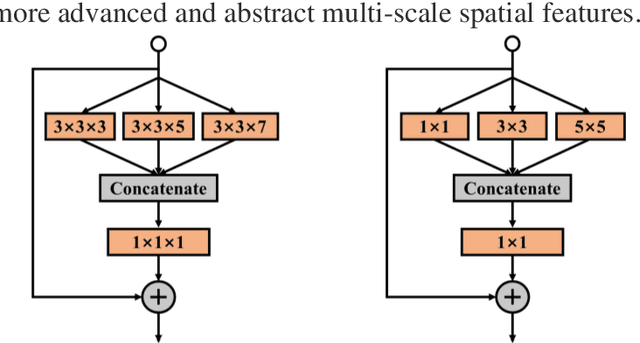Hyperspectral Images Classification Based on Multi-scale Residual Network
Paper and Code
May 12, 2020



Because hyperspectral remote sensing images contain a lot of redundant information and the data structure is highly non-linear, leading to low classification accuracy of traditional machine learning methods. The latest research shows that hyperspectral image classification based on deep convolutional neural network has high accuracy. However, when a small amount of data is used for training, the classification accuracy of deep learning methods is greatly reduced. In order to solve the problem of low classification accuracy of existing algorithms on small samples of hyperspectral images, a multi-scale residual network is proposed. The multi-scale extraction and fusion of spatial and spectral features is realized by adding a branch structure into the residual block and using convolution kernels of different sizes in the branch. The spatial and spectral information contained in hyperspectral images are fully utilized to improve the classification accuracy. In addition, in order to improve the speed and prevent overfitting, the model uses dynamic learning rate, BN and Dropout strategies. The experimental results show that the overall classification accuracy of this method is 99.07% and 99.96% respectively in the data set of Indian Pines and Pavia University, which is better than other algorithms.
 Add to Chrome
Add to Chrome Add to Firefox
Add to Firefox Add to Edge
Add to Edge